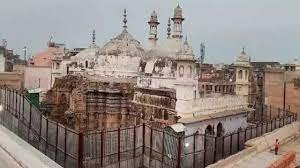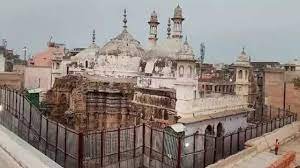Gyanvyapi mosque is now open for Hindus, Varanasi court granted permission to Hindu devotees, they are now allowed to worship inside the ‘Vyas Ka Tekhana,’ a sealed area within the Gyanvapi mosque. The court has directed the district administration to facilitate the required arrangements within the next 7 days.
This decision follows the public disclosure, on January 25, of details from an Archaeological Survey of India survey report, revealing the existence of a Hindu temple at the mosque’s site through a court order.
History and controversy around Gyanvyapi Masjid
The court has granted the rights to the Hindu side, there are many stories regarding the Mosque. The majority agrees that the Kashi Vishwanath temple was destroyed, with some historians believing that Qutub ud-Din Aibak, the commander of Muhammad Gori, was responsible for the destruction in 1194. 
Some historians believe that the Kashi Vishwanath temple, already in existence, was destroyed to make way for the construction of a new one in the 14th century by the Jaunpur Sultan. However, there is disagreement regarding this theory due to a lack of proper evidence.
In 1585, Raja Todarmal, considered one of the gems of Akbar, directed Pandit Narayan Bhatt to repair the temple. Some historians credit Mughal Emperor Akbar for this initiative, while others reject this notion, asserting that Todarmal was fully capable of undertaking the task without needing any permission. Another narrative suggests that the temple and mosque were established under the Din-e-Illahi concept by Akbar, but there is no historical text to substantiate this claim.
On the other hand, some historians posit that the Gyanvapi mosque was established after the demolition of a temple under the orders of Aurangzeb. Many historians concur that Aurangzeb indeed ordered the demolition of temples, with renowned historian Irfan Habib asserting that ample evidence supports the claim that temples were demolished as a display of authority and power.
Although the reasons may vary, nearly every historian agrees that the temple was demolished. Regarding the mosque, it is believed to have existed since the time of Akbar, with Aurangzeb later reconstructing it.
In the year 2022, claims were made by the Hindu side that a Shivling was discovered in the mosque, but no evidence supporting this assertion was found. Some historians contended that it was a fountain, while others argued that it was indeed a Shivling that priests had attempted to conceal during the temple demolition. These remain as claims, as no written evidence has been found to substantiate either argument.
Masjid name Gyanvyapi?
The controversy surrounding its name is also present, questioning how a mosque could be named Gyanvapi. Theories suggest that the actual name of this mosque was ‘Alamgiri,’ and the surrounding location was named Gyanvapi, leading to its designation. However, no historical written evidence exists to substantiate this claim.
Theories suggest that the actual name of this mosque was ‘Alamgiri,’ and the surrounding location was named Gyanvapi, leading to its designation. However, no historical written evidence exists to substantiate this claim.
Amidst various stories surrounding the mosque, the matter is currently in court. The court has issued orders for arrangements to be made for Hindu prayers, including the removal of barricades, to be completed within a week. Furthermore, the court has directed that the prayers should be conducted by priests from the neighboring Kashi Vishwanath temple.











